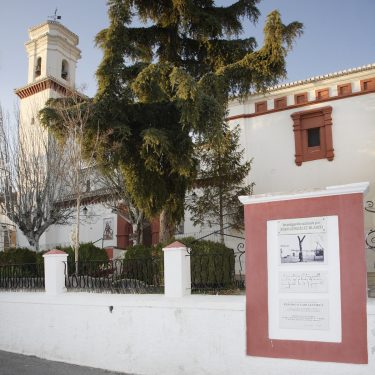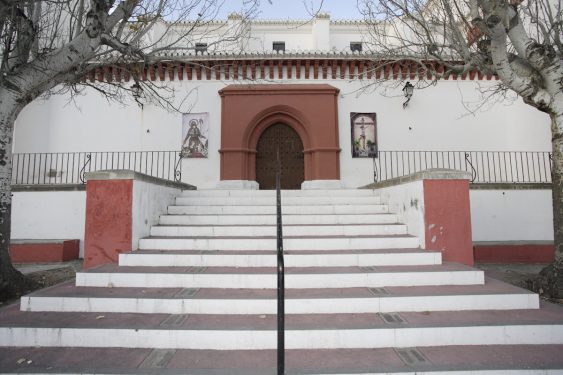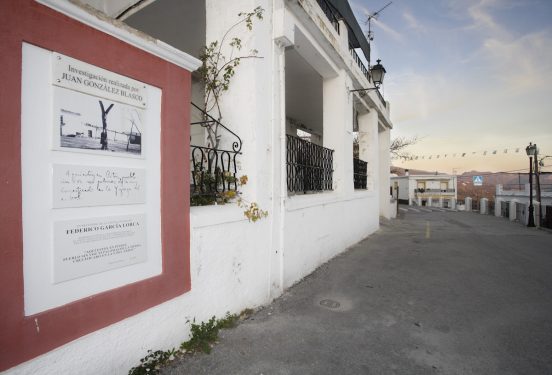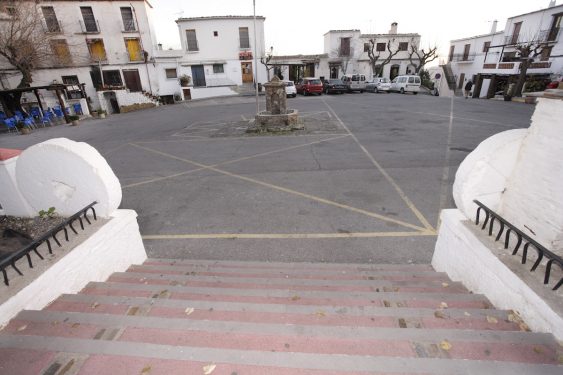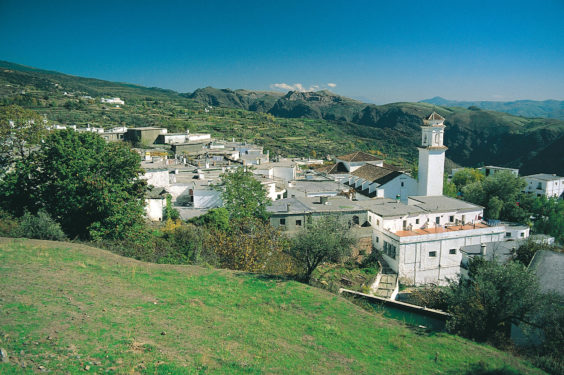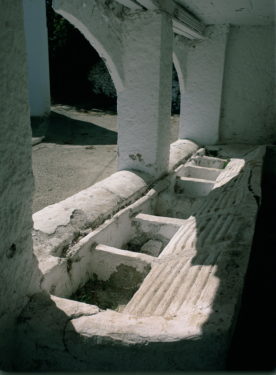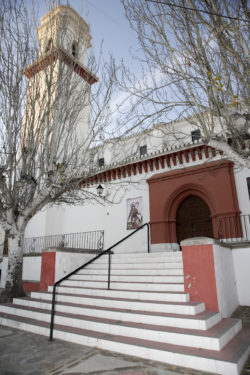The Lorca family took advantage of the annual stays in Lanjarón to tour part of the Alpujarra. They visited Órgiva, Cáñar, Carataunas and Pitres, sometimes with Falla and other friends.
Federico García Lorca’s visits to the Alpujarra were not limited to the towns closest to Lanjarón. He also went into the deep Alpujarra, then more difficult to access, seeking contact with even more untamed and beautiful landscapes and with the unknown inhabitants who lived half isolated in almost inaccessible villages.
Another site linked to the Lorquian Alpujarra is the village of Pitres, which today belongs to the municipality of La Tahá together with Mecina Fondales and Ferreirola. Federico’s visit, accompanied by two friends, took place in the spring of 1928. The documents that prove the stay are a letter to the poet Jorge Guillén and two photographs in one of which he poses as a crucified man next to a tree stripped of leaves and, in the background, the walls of a farmhouse from which protrude the heads of a group of curious people, perhaps his guides, next to a tied-up donkey.
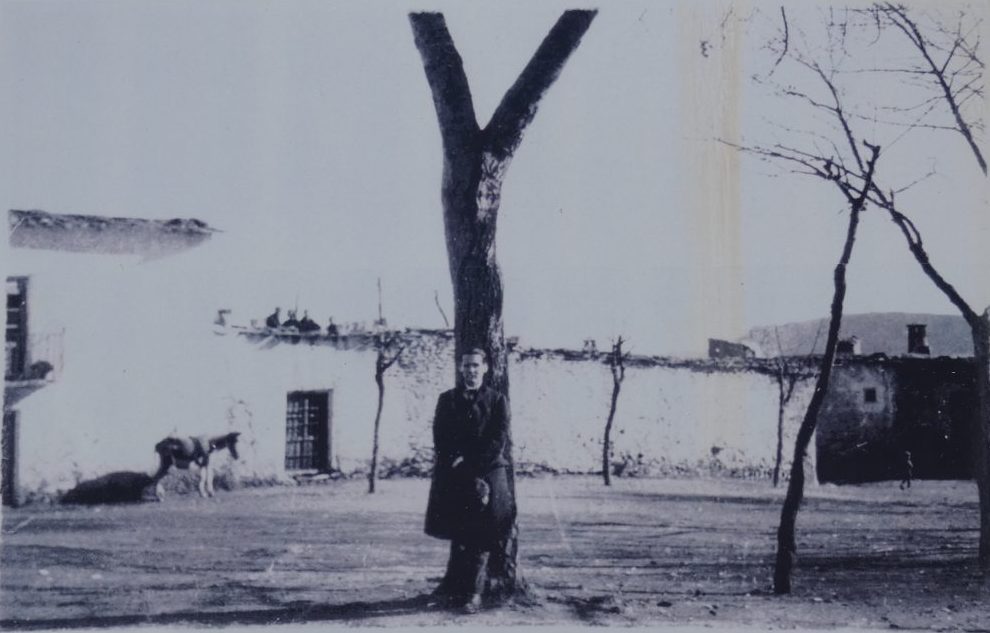
In the letter to Guillén, dated March 24, 1928, a year before leaving for New York, Federico is interested in his opinion about the first issue of the magazine gallo: “What did you think of gallo? Tell me. We’ve sent a special issue for you unannounced.”
The photographs accompanying the missive have separate messages. In the first, on the back, he writes: “Here I am high in the Alpujarras where I went with two friends. Next to me are the guides. The atmosphere is prodigious. Sierra Nevada is never seen. When will we go together to these places? One loses the notion of Europe. What is this? I am very serious in the photo because I am ruminating my surprise”. The text that accompanies the other photo is a kind of aphorism about the villages of ‘deep Spain’.
One of the guides who accompanied Federico on the 1928 excursion could have been, according to the investigator Manuel Arredondo, Antonio Gallardo Rodillo, The Lame Rosillo, a man “cultured in his own way, bohemian and vivid” whom Lorca met years earlier in Lanjarón and who accompanied him on some excursions with the family. The Lame Rosillo, according to Arredondo’s version, was shot, like Lorca, in the first weeks after the uprising against the Republic in 1936. A brother of his burned all the books and memories related to Federico García Lorca.
Pitres has cultivated the memory of Lorca’s visit in 1928 and evoked the words with which he described the town to his companion of the Generation of ’27, the poet Jorge Guillén: “Here I am in Pitres, a town without voice or pigeons of the mountains. Crucified in the Greek Y of the tree”. The text, and the corresponding photo, are displayed on a plaque in a square in Pitres next to a tree that recalls the one in the original image.
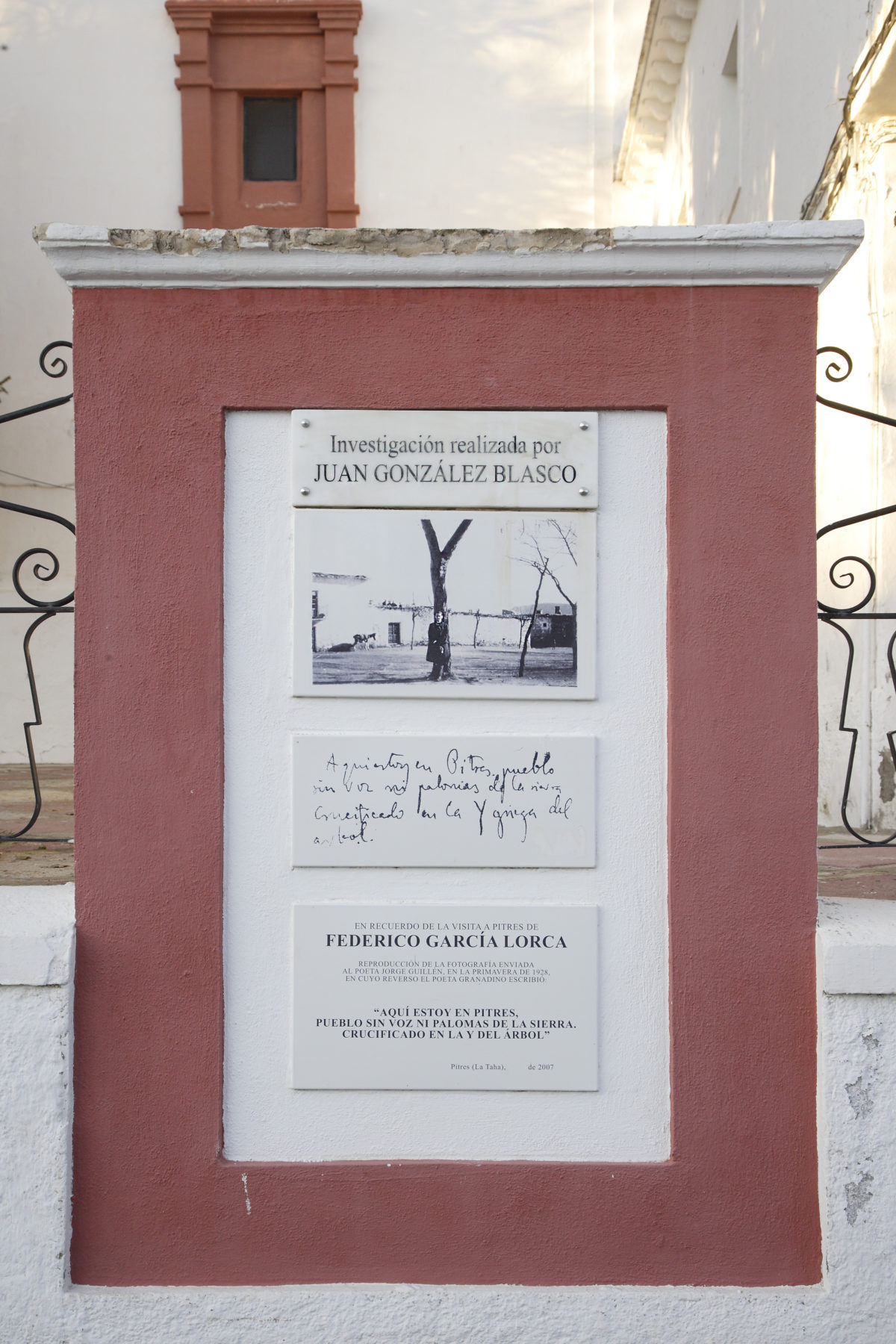
Whether from New York or from Buenos Aires, García Lorca will not forget the Alpujarra nor the recommendations for his mother to spend a few days at the Spa for her chronic liver ailments:
“Mom should not stop going to Lanjarón and Dad should go too, it will do him good, because if not they will have to touch our trigeminal” (June 1929).
“I keep reminding myself that mom has to go to Lanjarón and she must” (July 1929).
“By force, and if she hasn’t gone or doesn’t go, it will be because I’m not there, I’m a real stickler for things, but if she hasn’t gone, Conchita, Paco and Isabelita will be responsible if she gets colic, and I’ll be indignant all my life” (September 24, 1929).
“Tomorrow the people from Granada of the Children’s Circle of Lanjarón are giving me a meal, which I like very much because it is a popular atmosphere, since I am fed up with eating in big palaces and with very stuffy but very nice people” (Buenos Aires, 1933).
Veinticuatro bofetadas.
[Twenty-four slaps.]
Veinticinco bofetadas;
[Twenty-five slaps;]
después, mi madre, a la noche,
[then, at night, my mother]
me pondrá en papel de plata.
[will wrap me in silver paper.]
Guardia civil caminera,
[Civil Guard of the roads]
dadme unos sorbitos de agua.
[give me a few sips of water.]
Agua con peces y barcos.
[Water with fish and boats.]
Agua, agua, agua, agua.
[Water, water, water, water.]
¡Ay, mandor de los civiles
[Oh, boss of the guard]
que estás arriba en tu sala!
[Standing upstairs in your parlour!]
¡No habrá pañuelos de seda
[There’ll be no silk handkerchiefs]
para limpiarme la cara!
[to wipe my face!]
(Federico García Lorca. Poem of the Deep Song)
(Song of the Beaten Gypsy)- Arredondo Valenzuela M. García Lorca in Lanjarón. A Poet and a Landscape, included in Lanjarón, Water Landscapes. Lanjarón Spa, 1999.
- Adoración Elvira Rodríguez and Fernando Rubio Muñoz. Lorca in the Country of Nowhere (Lanjarón-Alpujarra), 2017.
- Federico García Lorca. Complete Works I and IV. RBA-Instituto Cervantes. Madrid, 2006.
- Isabel García Lorca. My Memories. Tusquets. Barcelona, 2002.
- Juan González Blasco. Órgiva. Milestones in his History. Volume II. Hermanos Gallego Hódar Publishing House. Órgiva, 2001.
- Lorca´s location
- Pitres
- current location
- Pitres
- Web
- https://www.turgranada.es/en/municipio/pitres/
